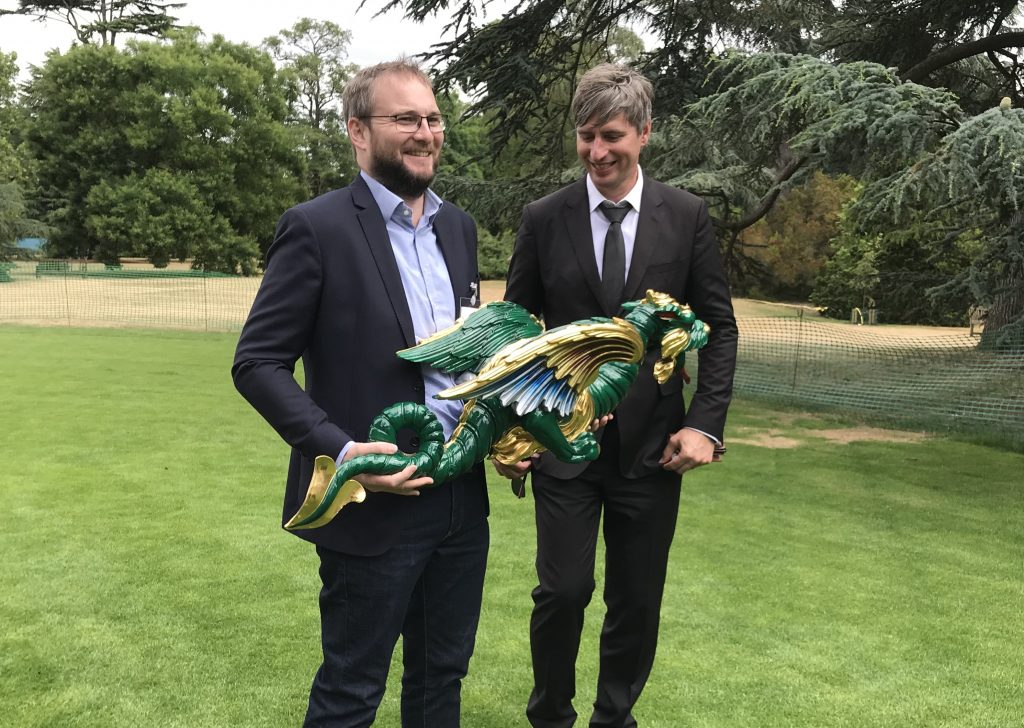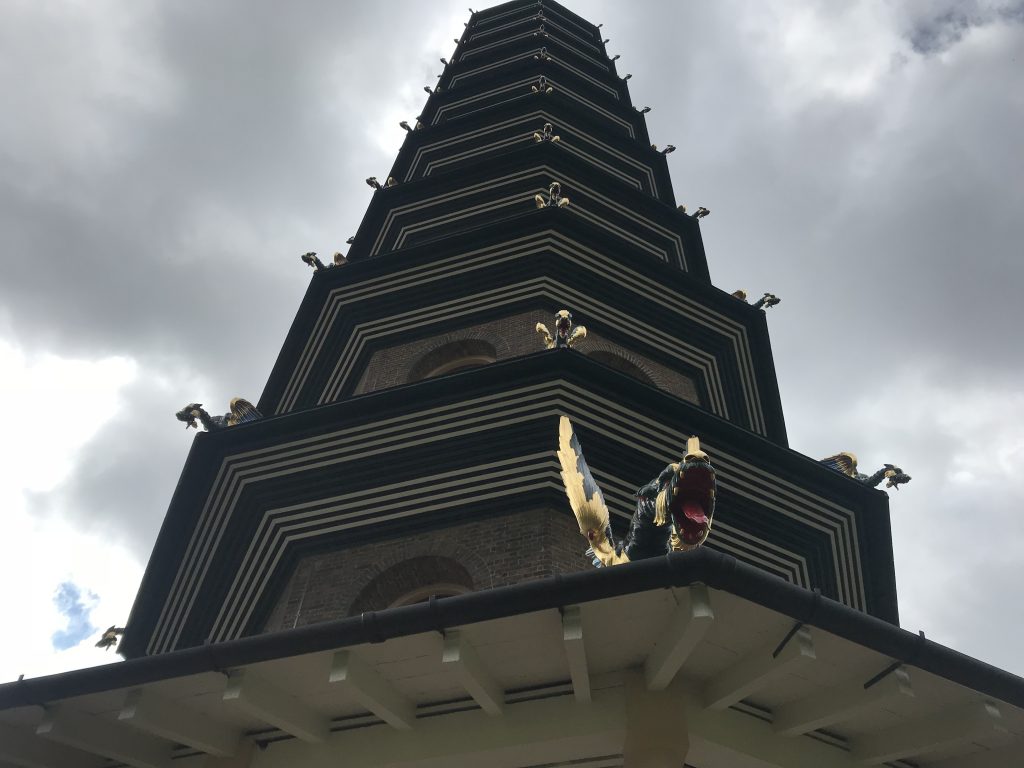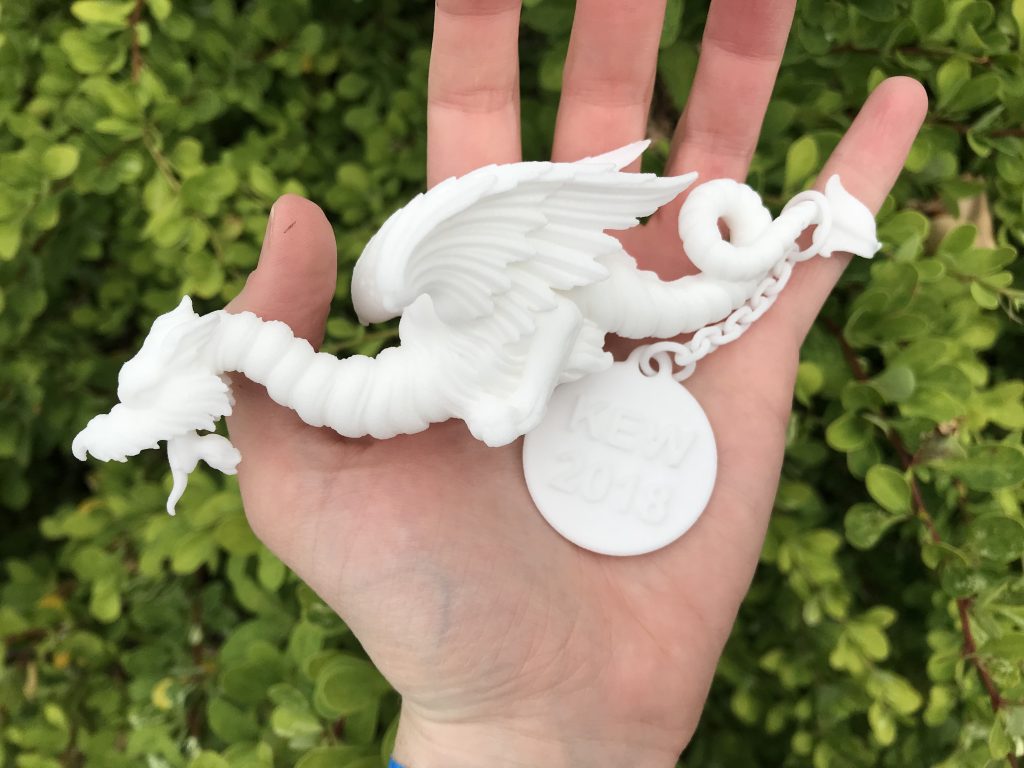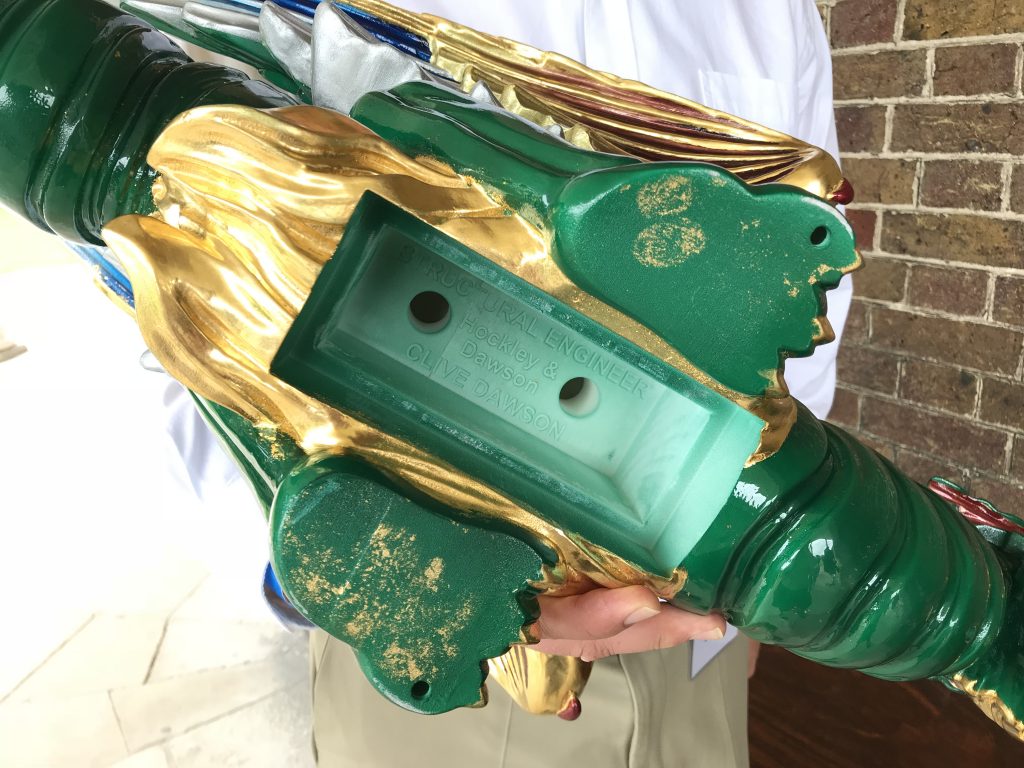The Great Pagoda at Kew, on the outskirts of London in the UK, is now alive with seventy-two 3D printed dragons. In the original project for the Royal Botanic Gardens, 3D Systems has applied large-scale selective laser sintering (SLS) technology to help restore the 256 year-old building back to its former glory.
Now, for the first time in its history, and marking the company’s first UNESCO World Heritage site restoration, the 50 meter tall tower is open to the public, and 3D Printing Industry was invited to take a look inside.

A historic success
Kew’s Great Pagoda was completed in 1762 by Sir William Chambers as a 10 storey viewing gallery, across 75 acres of parkland (now 300) and out to the city of London. An perfect example of Western Chinoiserie, and the “Grand Tours” of the time, each level of the building was adorned with serpent-tongued dragons, originally carved from wood. However, since the 1780s the pagoda has stood wholly dragon-less.
Over time, many projects have tried and failed to reproduced the tower’s Edwardian grandeur, but many fell flat due to historic inaccuracies and lack of backing from the local government.
This time Historic Royal Palaces (HRP), the charity responsible for the upkeep of many of the UK’s royal sites of interest, took on the project with backing from Historic England, a public body of the British Government sponsored by the Department for Culture, Media and Sport.

Awakening 250 year old dragons
HRP’s plans to renovate the 16th century Great Pagoda were initiated in 2013. The first step was to perform a survey, indicating the specific tolerances of the structure, and to unearth the original plans and early drawings of the building in its heyday.
“The main challenge we had to figure out,” explained HRP Project Manager Rob Umney, “was how to make the dragons.”
The eight largest dragons, which guard the base of the pagoda, were made by a master carver from African Red Cedar wood. Combined, these figures weigh approximately 2,500kg creating a tremendous amount of stress on the old structure. Therefore, Umney adds, “We needed a new technology to make it really light.”

Teaching old manufacturing new tricks
3D Systems’ involvement in the project started in 2016 when the company officially won the contract to make the dragons using 3D printing.
According to Craig Hatto, Project Lead at HRP, “3D Systems were the only company with the workflow and bases to do the job.”
The earliest 3D form of the dragons was a single clay model. This model, and its subsequent wooden carving, was 3D scanned by 3D Systems using FARO bluelight hardware, to create a digital framework for the 3D printed beasts.

3D printing the dragons
3D Systems’ biggest SLS 3D printer, the Pro 230, was used to print all 72 dragons working a print size of 550 x 550 x 750 mm (L x W x H). Measuring from just under 1 meter to 1.5 meters in length, the dragons had to be segmented into five different parts for printing – the head, center body, left wing, right wing, and the tail.
According to estimates, a 1.5 meter dragon took around 18 hours to print. In total the full construction of the figures (modeling, printing, post processing, painting, gilding) took around one year, with 3D Systems enlisting two machines in the UK and two in the Netherlands to complete the job.
Each dragon is hollow, and was made from the company’s standard DuraForm SLS material, a PA 12 Nylon with excellent chemical resistance and tensile strength. Before reaching the pagoda, dragons 3D printed in this material underwent wind tunnel tests at BAE Systems in the UK. The finished design generated by this test means that under high winds the dragons bed-down into the roof, rather than fly off into the sky.

3D in collaboration
On average, the figures weigh around 10 kg each. In addition to lightweighting, 3D printing ensured that each of the dragons could retain some individuality.
In total, there are 18 3D printed variations on the master dragon design, with left and right mirror images of the figures to retain Georgian symmetry.

Exact details of the cost to make the dragons remain undisclosed due to customer confidentiality, but Simon Hammond, Regional Sales Manager for 3D Systems Europe did confirm that it was “a six-figure sum.”
Overall, for 3D Systems it is a multidisciplinary approach that is credited for the dragon’s return. “The main takeaway,” concludes Hammond “was the delivery of the project. It would have been very easy to offer one part of the process but the success has been in offering a complete end to end solution. Being collaborative.”
For more exclusive news and interviews from 3D Printing Industry sign up to our newsletter, follow us on Twitter and like us on Facebook.
Seek new opportunities in the industry now through 3D Printing Jobs, and post a vacancy for free now if you’re an employer.
Featured image shows a 3D printed, painted and gilded dragon for Kew’s Great Pagoda. Photo by Beau Jackson


